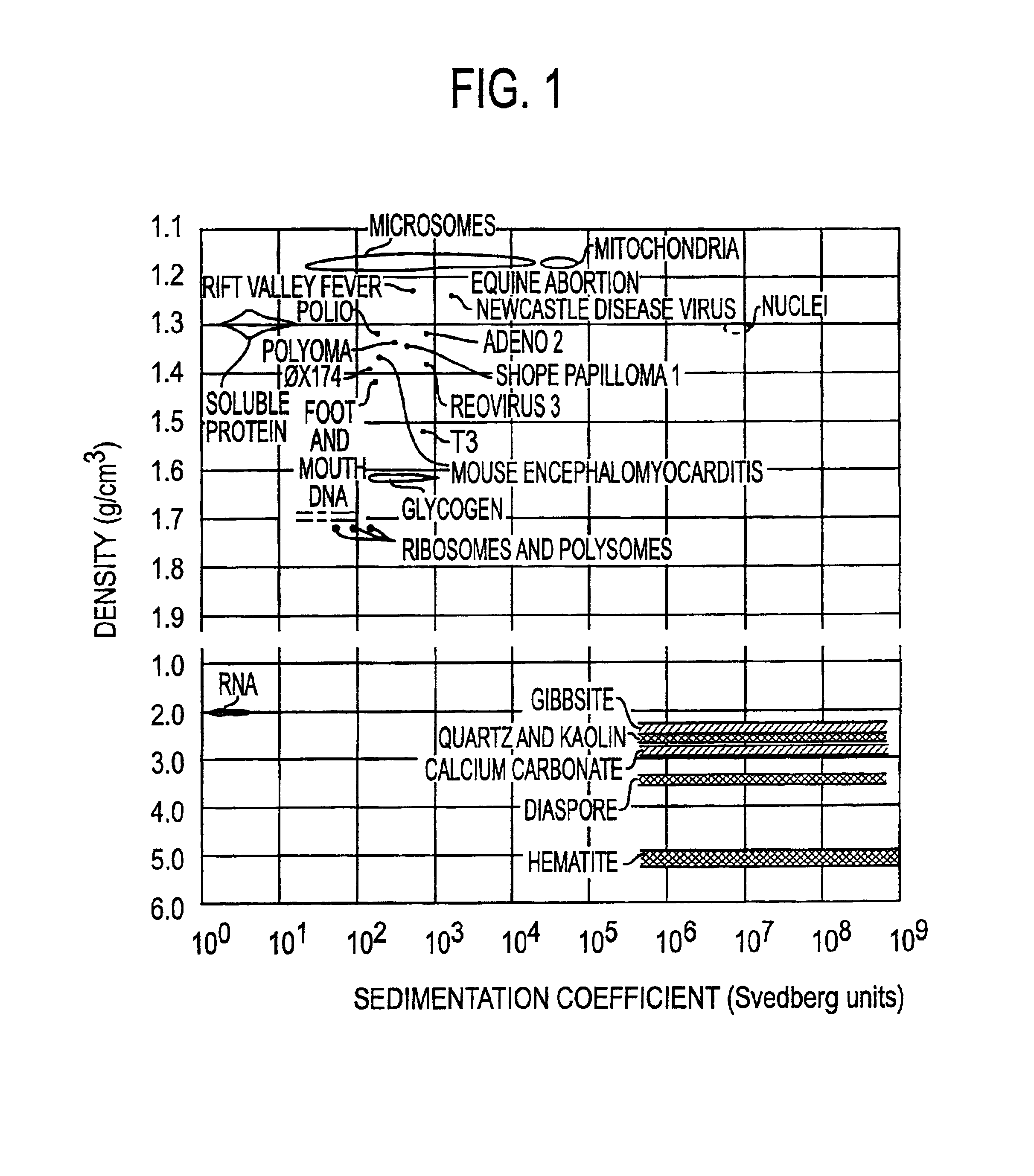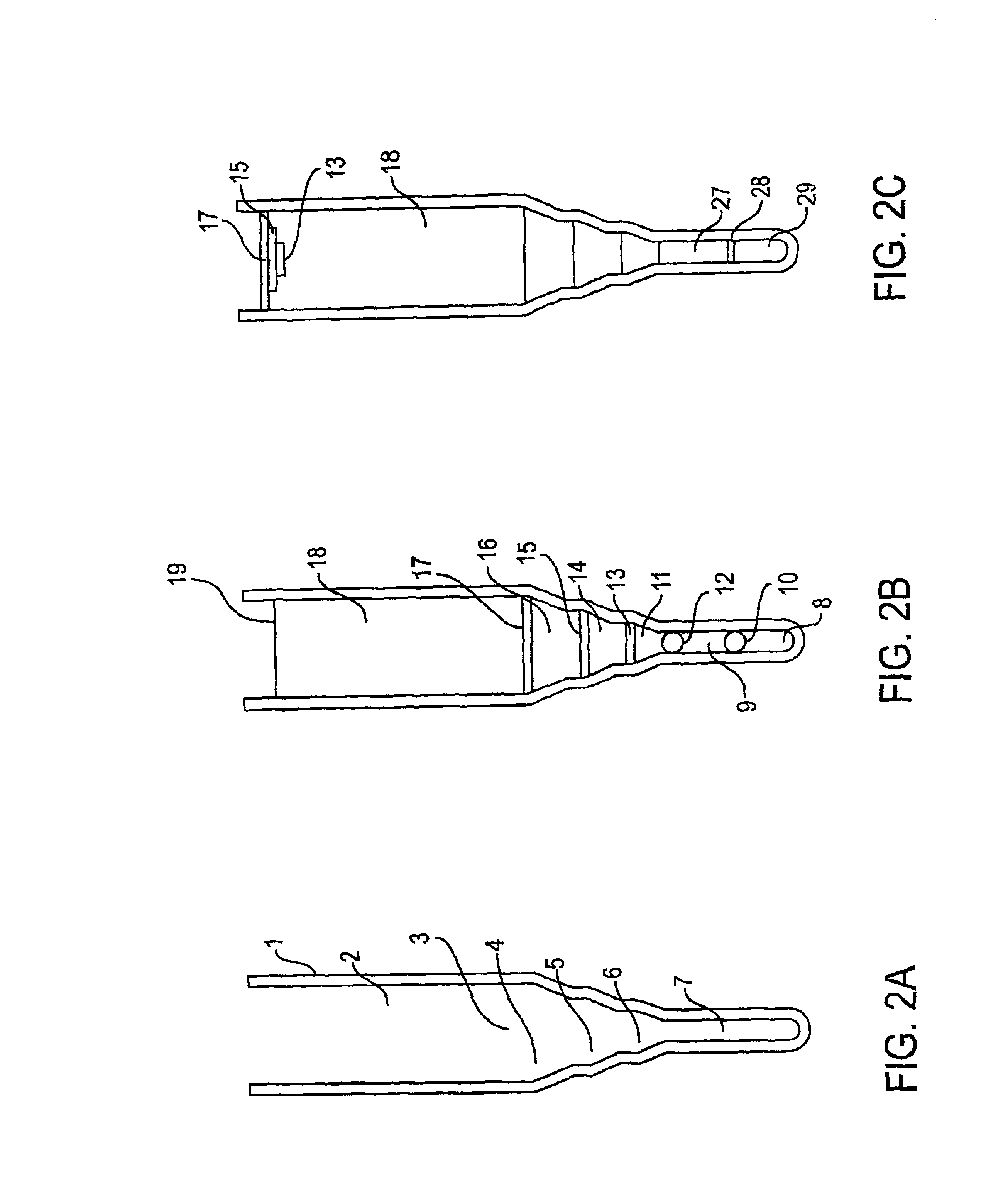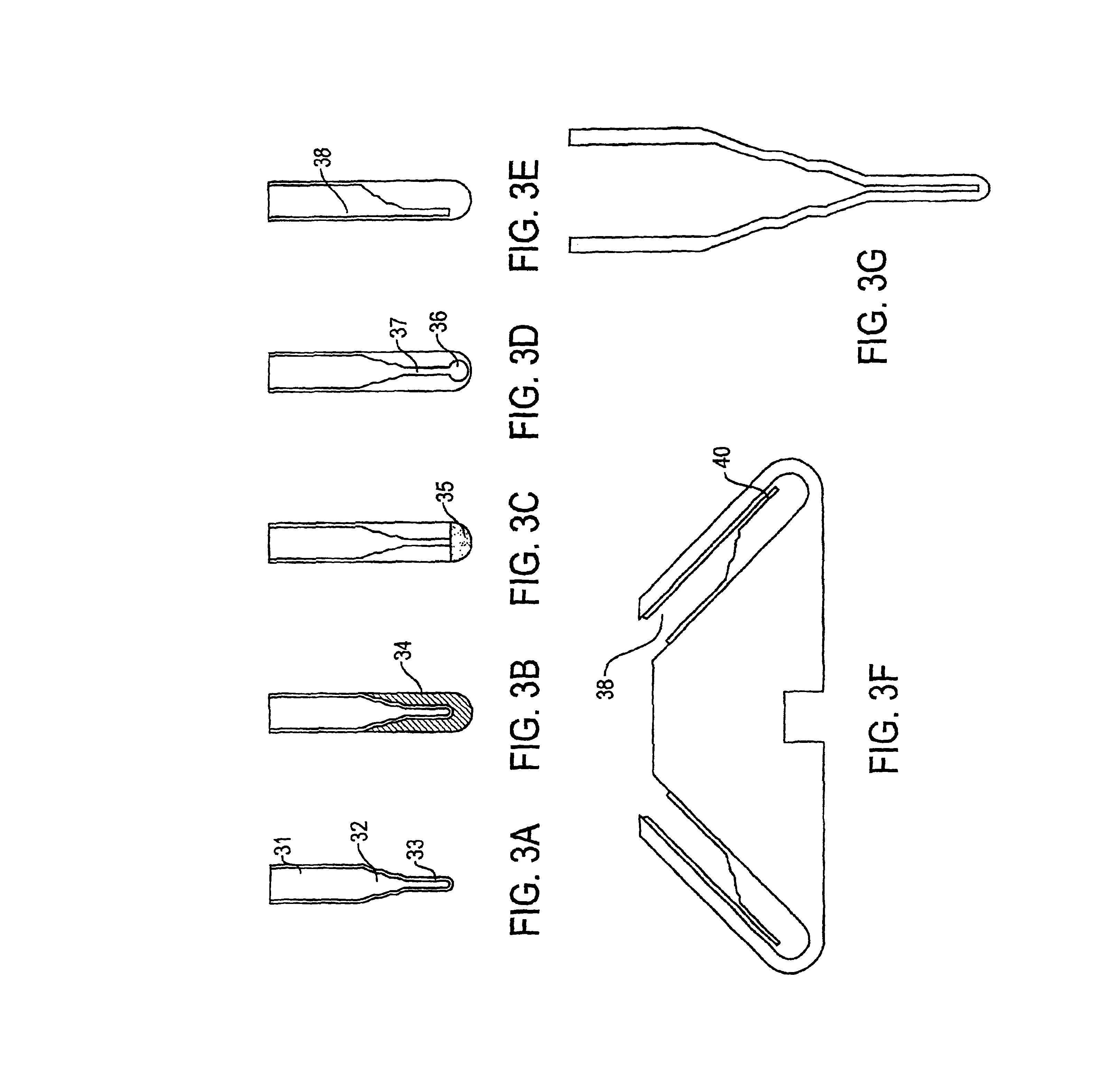Detection and characterization of microorganisms
a technology of microorganisms and detection methods, applied in the field of separation and identification of microorganisms, can solve the problems of severely hindered and achieve the effects of rapid clinical distinction, rapid discovery of new infectious agents, and rapid development of new antiviral drugs
- Summary
- Abstract
- Description
- Claims
- Application Information
AI Technical Summary
Benefits of technology
Problems solved by technology
Method used
Image
Examples
example
[0080]To illustrate the use of microbanding tubes, experimental studies have been carried out using a small single-stranded non-pathogenic DNA virus φX 174. Approximately 1010 virus particles which had been purified by isopycnic banding in CsCl in a microbanding tube such as shown in FIG. 2A were suspended in 5 mL of 0.05 M borate buffer, were pelleted in a microbanding tube at 35,000 rpm in a swinging bucket rotor, and were resuspended in approximately 3 μL for analysis. The analyses were done on a PerSeptive Biosystems DESTR instrument with an extraction delay time set at 150 nseconds using a matrix of sinapinic acid. Bovine insulin (Mw=5,734.59) and horse heart apomyoglobin (Mw=16,952) were used as 1 and 2 pmole standards. The results are shown in Table 1. The φX 174 masses for virion capsid proteins F, G, H and J are calculated from published sequence data. The differences between the calculated and experimental values for F and H are probably due to posttranslational modificati...
PUM
| Property | Measurement | Unit |
|---|---|---|
| molecular weights | aaaaa | aaaaa |
| densities | aaaaa | aaaaa |
| diameter | aaaaa | aaaaa |
Abstract
Description
Claims
Application Information
 Login to View More
Login to View More - R&D
- Intellectual Property
- Life Sciences
- Materials
- Tech Scout
- Unparalleled Data Quality
- Higher Quality Content
- 60% Fewer Hallucinations
Browse by: Latest US Patents, China's latest patents, Technical Efficacy Thesaurus, Application Domain, Technology Topic, Popular Technical Reports.
© 2025 PatSnap. All rights reserved.Legal|Privacy policy|Modern Slavery Act Transparency Statement|Sitemap|About US| Contact US: help@patsnap.com



